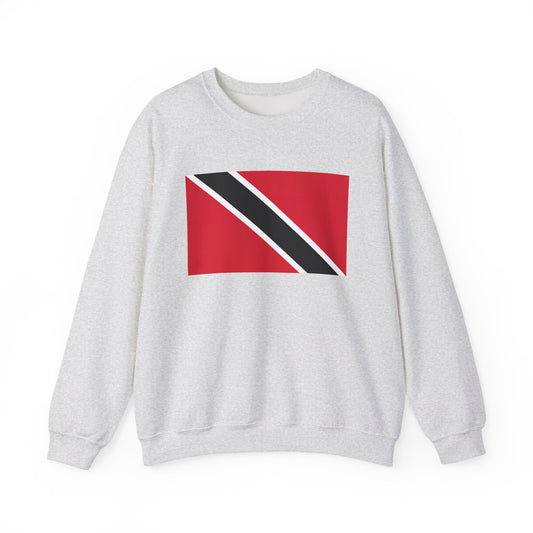-
Trinidad and Tobago Flag Hoodies
Regular price $34.40 USDRegular priceUnit price / per -
Trinidad and Tobago Sweatshirt
Regular price $34.15 USDRegular priceUnit price / per -
Trinidad and Tobago Flag Sweatshirt
Regular price $34.15 USDRegular priceUnit price / per -
Trinidad and Tobago Pillow
Regular price $22.65 USDRegular priceUnit price / per -
Trinidad and Tobago Leather Patch Hat
Regular price $18.85 USDRegular priceUnit price / per -
Trinidad and Tobago Backpack
Regular price $59.79 USDRegular priceUnit price / per -
Trinidad and Tobago Mug
Regular price $11.65 USDRegular priceUnit price / per -
Trinidad and Tobago Trucker Cap
Regular price $14.90 USDRegular priceUnit price / per -
Trinidad and Tobago Hoodies
Regular price $34.40 USDRegular priceUnit price / per -
Trinidad and Tobago T-shirts
Regular price $22.79 USDRegular priceUnit price / per -
Trinidad and Tobago Flag on T-shirt
Regular price $22.79 USDRegular priceUnit price / per
Collection: Trinidad and Tobago
The Trinidad and Tobago flag symbolizes national pride and identity for the people of this vibrant Caribbean nation. We will delve into the history, design, and protocols surrounding the flag of Trinidad and Tobago.
Overview of the Trinidad and Tobago Flag Design and Colors

The Trinidad and Tobago flag boasts a striking design characterized by simplicity and a meaningful color scheme. Central to the flag is a bold, black diagonal band that originates from the upper hoist-side corner stretching to the lower fly-side corner, creating a dynamic contrast against the flag's vibrant red background. This distinctive black band is flanked on either side by narrower white stripes, adding a layer of visual interest and depth to the overall design. The flag's palette—comprising red, white, and black—carries deep symbolism, with each color reflecting key aspects of the nation's identity and values.
The red embodies the life force and energy of the people and the land, symbolizing both the warmth of the nation's climate and the vibrancy of its culture. Black represents the resilience and strength of the people, a tribute to the unity and indomitable spirit that have been instrumental in the country's history. The white stripes serve as a reminder of the aspirations towards peace and equality, signaling a commitment to harmony and purity in the nation's endeavors. This color trio harmoniously combines to convey a message of unity, strength, and optimism, encapsulating the essence of Trinidad and Tobago's national identity.
Historical Context of the Trinidad and Tobago Flag
The journey to the flag's creation began in the early 1960s, as Trinidad and Tobago sought independence. Recognizing the need for a symbol that would unite the diverse population and encapsulate the nation's newfound sovereignty, the government initiated a national competition to design the country's flag. Carlisle Chang, a renowned local artist, submitted the winning design, officially adopted on August 31, 1962, the day Trinidad and Tobago declared its independence from Britain.
This pivotal moment marked the birth of a national emblem distinct from the colonial flags that had flown over the islands for centuries. Unlike many countries that underwent several modifications to their flags post-independence, the flag of Trinidad and Tobago has remained unchanged, a testament to the enduring vision and unity it was intended to represent from the outset. The flag's adoption was not merely a formality but a declaration of the nation's identity, aspirations, and the dawn of a new era in its history.
Symbolism Behind the Trinidad and Tobago Flag

At the heart of the Trinidad and Tobago flag lies a rich tapestry of symbolism, each color and design element conveying deep national values. The bold red color that dominates the flag reflects the vitality, energy, and passion of the people and the sun-drenched landscapes of the nation. This vibrancy is balanced by the black, which denotes the population's resilience, strength, and unity—a people known for their ability to overcome adversity and thrive.
Surrounding the black diagonal are white bands that signify the sea surrounding the islands and the pure aspirations for peace and equality held by the nation. Together, these elements intertwine to encapsulate the spirit of Trinidad and Tobago, reflecting its struggles and achievements and its ongoing journey towards unity, strength, and harmony. Through its design, the flag narrates the story of a nation continually striving toward the ideals of love, joy, peace, and solidarity, making it a profound symbol of national pride and identity.
Current Relevance of the Trinidad and Tobago Flag
Today, the Trinidad and Tobago flag is a ubiquitous presence in the nation's life, woven into the fabric of daily existence and in the grand tapestry of state events. It waves proudly at governmental buildings and educational institutions and during significant national ceremonies, embodying the sovereignty and spirit of the country. Its colors are mirrored in the attire of the nation's athletes during international sports competitions, serving as a beacon of national pride and unity on a global stage. Moreover, it is a central figure during Independence Day celebrations, where the flag's hoisting symbolizes the country's enduring journey since 1962.
It plays a ceremonial role in the military, representing the honor and duty of those serving. Despite its symbolic status, the flag has also sparked discussions and debates reflecting the evolving national identity and inclusivity narrative. These dialogues allow reflection on how the flag can continue representing all facets of Trinidad and Tobago's diverse society. Its role in public discourse underscores the flag's significance beyond a symbol of the state, as it engages the citizenry in contemplating their shared past and future aspirations. This ongoing relevance ensures that the flag remains not just a national emblem but a living symbol of the nation's collective spirit and aspirations.






















